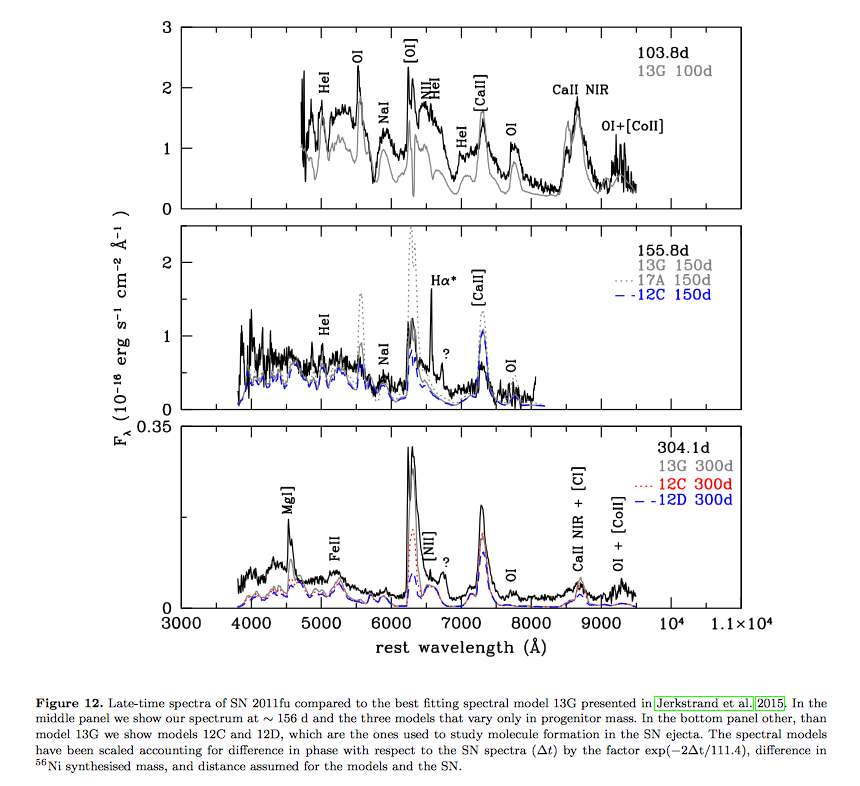Padova-Asiago Supernova Group
Highlights
SN 2011fu: A type IIb Supernova with a luminous double-peaked light curve
Morales-Garoffolo, A. et al. 2015 MNRAS 454, 95 (link to pdf)
We present optical and near infrared observations of the type IIb supernova (SN) 2011fu from a few days to 300 d after explosion. The SN presents a double-peaked light curve (LC) similar to that of SN 1993J, although more luminous and with a longer cooling phase after the primary peak. The spectral evolution is also similar to SN 1993J's, with hydrogen dominating the spectra to 40 d, then helium gaining strength, and nebular emission lines appearing from 60 d post-explosion. The velocities derived from the P-Cygni absorptions are overall similar to those of other type IIb SNe. We have found a strong similarity between the oxygen and magnesium line profiles at late times, which suggests that these lines are forming at the same location within the ejecta. The hydrodynamical modelling of the pseudo-bolometric LC and the observed photospheric velocities suggest that SN 2011fu was the explosion of an extended star (R450 Rsun), in which 1.3 10^51 erg of kinetic energy were released and 0.15 Msun of 56Ni were synthesised. In addition, a better reproduction of the observed early pseudo-bolometric LC is achieved if a more massive H-rich-envelope than for other type IIb SNe is considered (0.3 Msun). The hydrodynamical modelling of the LC and the comparison of our late-time spectra with nebular spectral models for type IIb SNe, point to a progenitor for SN 2011fu with a ZAMS mass of 13-18 Msun. 71
Morales-Garoffolo, A. et al. 2015 MNRAS 454, 95 (link to pdf)
We present optical and near infrared observations of the type IIb supernova (SN) 2011fu from a few days to 300 d after explosion. The SN presents a double-peaked light curve (LC) similar to that of SN 1993J, although more luminous and with a longer cooling phase after the primary peak. The spectral evolution is also similar to SN 1993J's, with hydrogen dominating the spectra to 40 d, then helium gaining strength, and nebular emission lines appearing from 60 d post-explosion. The velocities derived from the P-Cygni absorptions are overall similar to those of other type IIb SNe. We have found a strong similarity between the oxygen and magnesium line profiles at late times, which suggests that these lines are forming at the same location within the ejecta. The hydrodynamical modelling of the pseudo-bolometric LC and the observed photospheric velocities suggest that SN 2011fu was the explosion of an extended star (R450 Rsun), in which 1.3 10^51 erg of kinetic energy were released and 0.15 Msun of 56Ni were synthesised. In addition, a better reproduction of the observed early pseudo-bolometric LC is achieved if a more massive H-rich-envelope than for other type IIb SNe is considered (0.3 Msun). The hydrodynamical modelling of the LC and the comparison of our late-time spectra with nebular spectral models for type IIb SNe, point to a progenitor for SN 2011fu with a ZAMS mass of 13-18 Msun. 71
